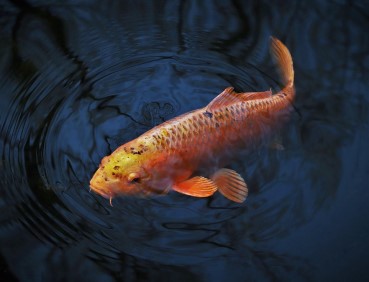Maintain clean pond water with these Tips & Tricks
Most water gardeners are aware of the importance that good quality water plays in a pond habitat. Not knowing how to get or keep water quality can sometimes prove challenging. Your water may be clear, but your fish might be acting differently, which can signify that something might be a little off in your pond’s water.
With a little education and experience, you’ll become better equipped to solve whatever pond water issues you might have. For starters, follow our 7 tips below to help keep your pond water clean!
1. Maintain a healthy fish population
If you have more than 25cm of fish for every 400 Litres of water, your pond is likely over-populated. Excessive fish waste can cause an imbalance in pond water. Consider finding some of them a new home. Many pond retailers and contractors will accept your fish.
2. Don’t over-feed your fish
When you feed fish more than they can eat, the uneaten food is left to decay in the pond. Be careful not to feed your fish more than once per day, and no more than they can eat in 2 to 3 minutes. Choose a quality fish food – preferably one that floats as opposed to sinking to the bottom of the pond if left uneaten.
3. Create a proper balance of plants
At season’s peak, you should have 40% to 60% of the surface area of your pond either covered or shaded by plants. Too many plants can cause oxygen deficiencies at night due to the photosynthetic process when the plants take in oxygen and give off carbon dioxide. Your fish need the oxygen to survive (see tip #7).
4. Choose the right size pump for your pond
You should be circulating the entire pond’s water volume a minimum of once every hour. Make sure your pump’s flow isn’t restricted by debris in the skimmer or biological filter, and be careful not to pump water higher than it was intended. Every pump has its flow limitations. We’ve made it easy for you to choose the correct size pump for your pond and waterfall with our pump selection or call us at 1300 733 113.
5. Clean debris from pond before it has a chance to decay
Your pond skimmer will remove most of the debris from the surface of your pond, but you can also use a pond net to skim leaves and small sticks before they have a chance to descend to the pond’s bottom where they’ll decay. Decaying debris, combined with fish waste and leftover fish food, can cause ammonia levels to spike in your pond.
Ammonia can be harmful to your fish and should be addressed right away. If you see your fish jumping out of the water, you likely have an ammonia spike which can happen after adding an algae treatment. You can purchase an ammonia test kit at your local pet and aquarium store and if you find the levels are high, simply treat your pond water with Ammonia Neutralizer. Beneficial microbes helps keep your pond water healthy and clean for your finned friends. Better yet, install an Automatic Dosing System to electronically dispense beneficial bacteria and other treatments to your pond to help with breaking down debris and maintaining a proper nitrogen cycle.
6. Choose proper filtration for your pond
Just like your pond pump, your pond’s filter should match the size of your water garden. Most pond filters are based on ideal circumstances, and if you exceed those, your filter becomes less effective. Always up-size your filter so that it can handle more than the capacity of your pond and remember to clean your filter according to instructions.
There are two types of filters in an Aquascape ecosystem pond. A mechanical filter, also known as the skimmer, removes surface debris from your pond water such as leaves and small sticks. The biological filter, or BioFalls filter, is positioned to create the beginning of the waterfall in your pond. This filter uses bacteria to break down pond wastes, converting them into less harmful compounds that can be absorbed as fertilizer by your aquatic plants.
7. Keep your pond cool during the dog days of summer
When pond water exceeds 25º Celcius, it has a difficult time retaining acceptable levels of dissolved oxygen, which is critical for the health of your fish. This is why it’s important to have the surface of your pond shaded by aquatic plants (see tip #3) – to help keep pond water cool. Fish need oxygen to survive. If you see them at the pond’s surface gasping for air, add an aerator to help them during times of extreme heat.







